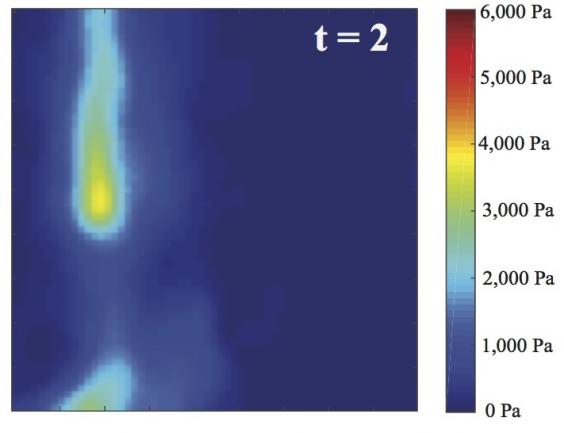Blair, Urbach collaboration uncovers the physics of Oobleck.

Posted in News Story
The nonintuitive behavior of shear-thickening suspensions, such as the familiar cornstarch–water mixture, is a subject of both fundamental and practical importance, but the microscopic phenomena responsible for the dramatic thickening are unknown. Professor Blair and Urbach, working with postdoctoral fellow Vikram Rathee, developed a novel approach to directly measure the stresses at the boundaries of sheared suspensions and found dramatic spatial and temporal stress fluctuations not previously reported. The image above shows three sequential snapshots of the boundary stress field with a high-stress region that moves across the field of view in the direction of the shear flow. Quantitative analysis of the stresses shows that the suspension spontaneously and intermittently separates into two different fluid phases with substantially different properties, thus revealing that the discontinuous liquid–solid transition that is the most dramatic form of shear thickening is actually ubiquitous and responsible for the observed shear thickening, even in regimes where the average viscosity increases smoothly with applied shear. For more information see the links below:
